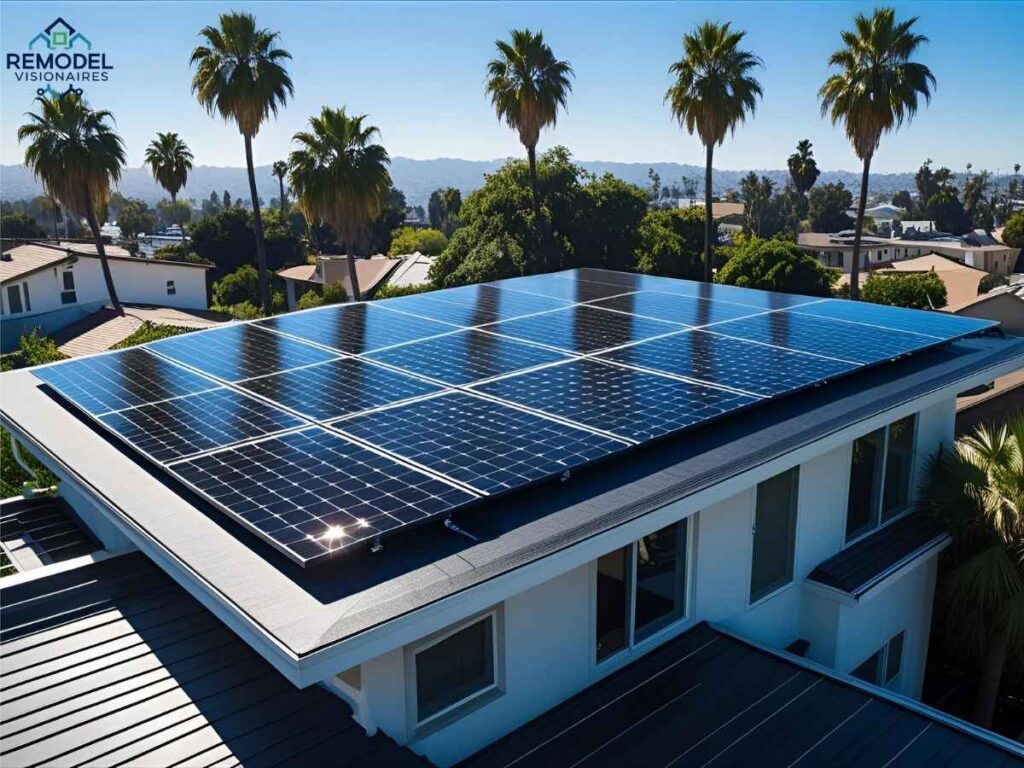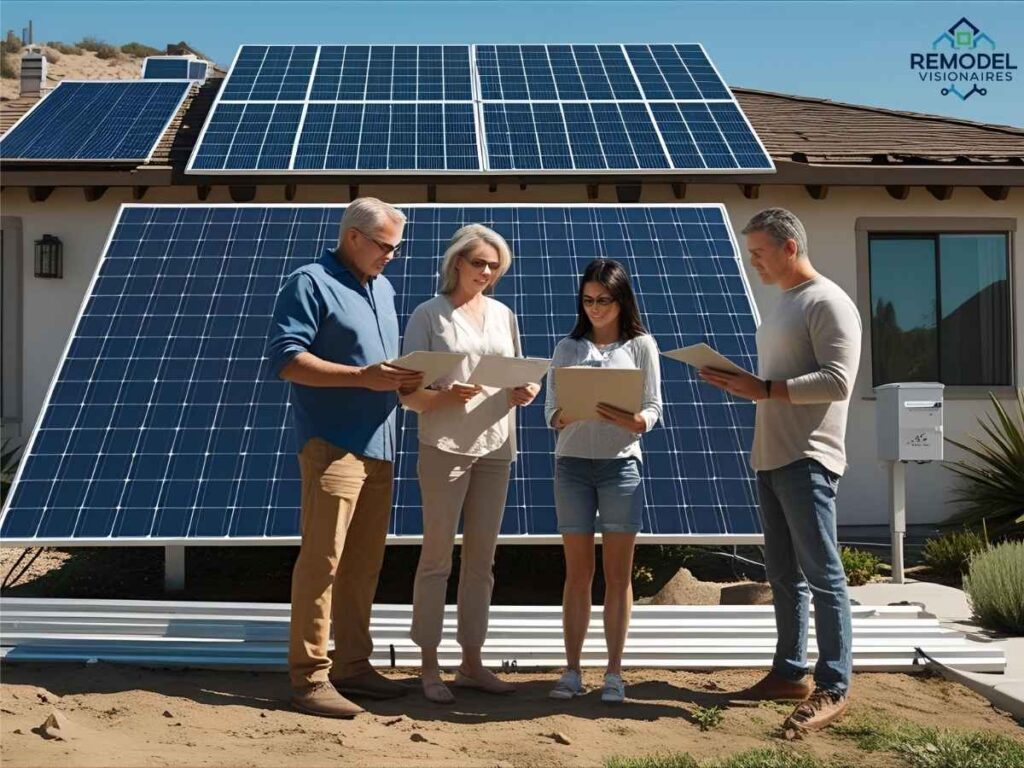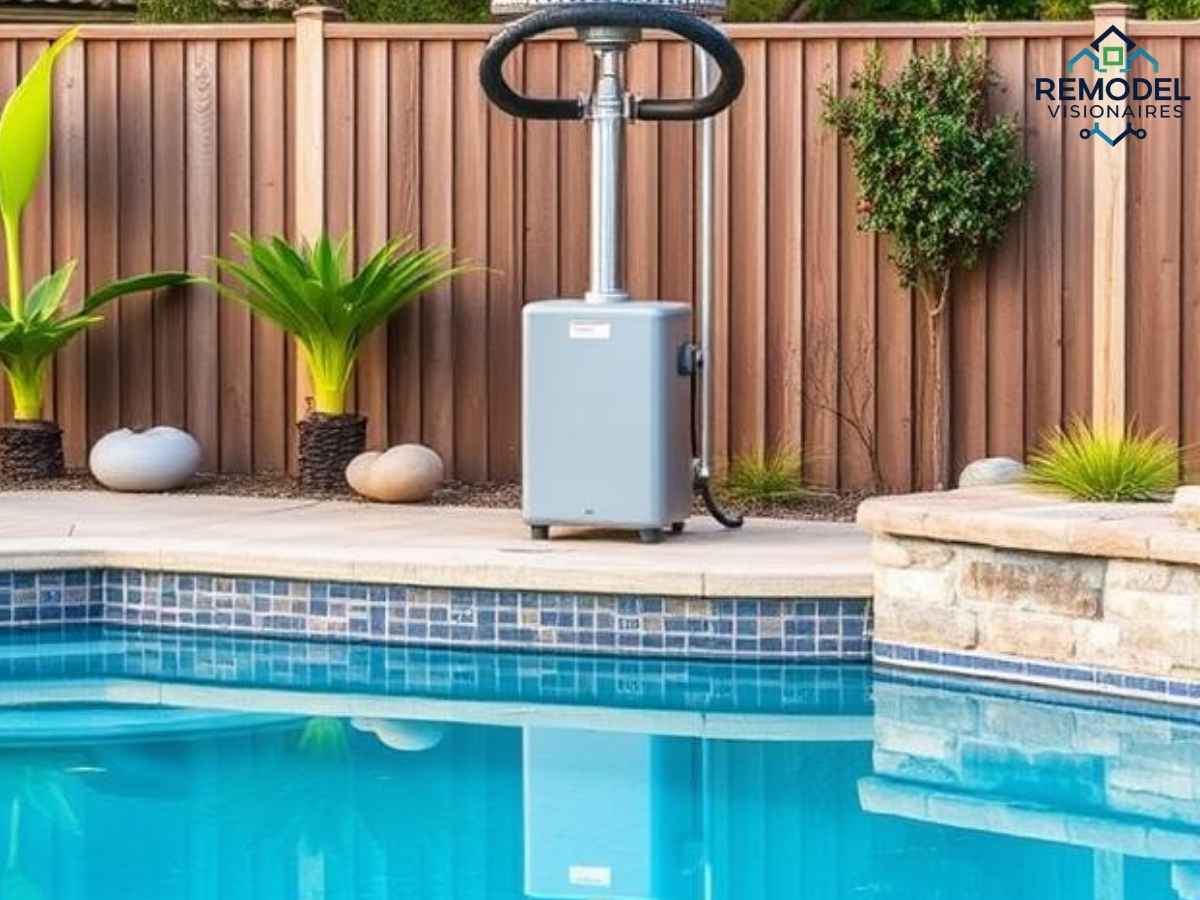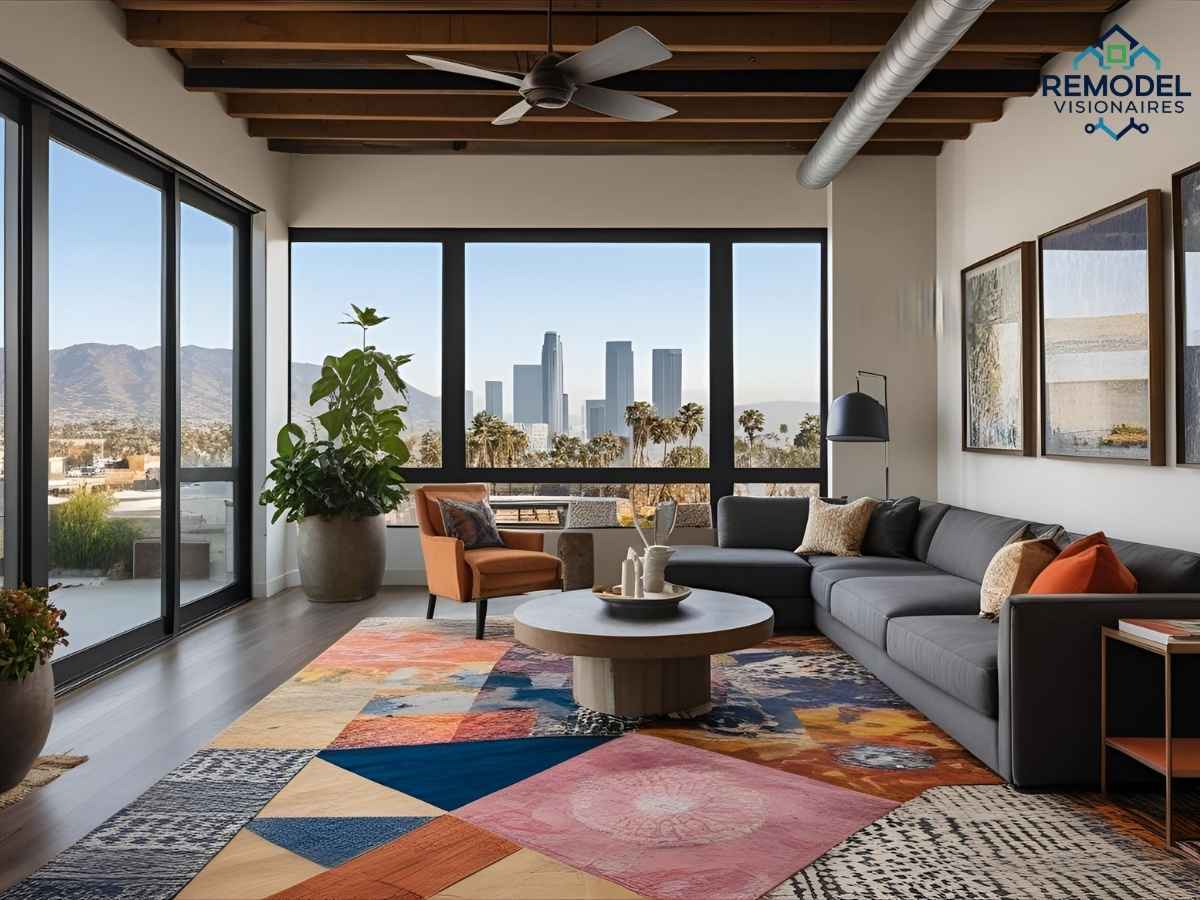Imagine waking up in Silver Lake, the early sun streaming through your window, and knowing your home is powered by the same sunshine that warms the Hollywood Hills. In Los Angeles, where clear skies and rising energy costs are part of daily life, maximizing solar energy is more than a trend—it’s a smart investment for homeowners. Whether you’re in Venice Beach, Highland Park, or Encino, harnessing solar power can slash your bills, boost your property value, and help create a cleaner city for generations to come.
Table of Contents
Why Los Angeles Leads in Solar Energy
Los Angeles is blessed with an average of 3,257 hours of sunshine every year, making it one of the sunniest major cities in the U.S. Neighborhoods from Santa Monica (90401) to Boyle Heights (90033) enjoy between 7 to 12 hours of sunlight daily, depending on the season. This abundance of sunshine, paired with high electricity rates—currently averaging 31.9¢ per kWh—makes solar energy particularly attractive for LA homes.

But LA isn’t just about good weather. The city’s commitment to sustainability, combined with robust incentives and a streamlined permitting process, has made it a national leader in residential solar adoption. With citywide mandates requiring solar on new homes and generous rebates, there’s never been a better time to go solar.
Local Challenges and Considerations
While the LA climate is ideal for solar, homeowners face unique challenges. Dense neighborhoods like Koreatown (90005) often have limited roof space or shading from nearby buildings. In hillside areas such as Hollywood Hills (90068), roof angles and orientations can impact solar panel efficiency. Older homes in neighborhoods like Echo Park (90026) may require roof upgrades or electrical work before installation.
Navigating the local permitting process with the Los Angeles Department of Building and Safety (LADBS) can feel daunting, especially for first-timers. However, the city offers express permits for most standard rooftop installations, and the LADWP provides clear guidelines for interconnection and incentive claims.
The Step-by-Step Guide to Solar Installation in Los Angeles
1. Assess Your Solar Potential
Start by evaluating your roof’s condition, orientation, and shading. South-facing roofs in LA neighborhoods like Westchester (90045) or Sherman Oaks (91423) typically receive the most sunlight. Use online solar calculators or consult a local installer for a detailed analysis.
2. Get Multiple Quotes
Contact at least three reputable local solar companies. Compare system sizes, panel brands, warranties, and financing options. Be sure to ask about their experience with local permitting and LADWP interconnection.
3. Secure Permits and Approvals
For most single-family homes, you’ll need a building and electrical permit from LADBS. If your system is under 10 kW and meets certain criteria, you may qualify for the Express Permit program, making the process faster and easier. All systems must be installed by a licensed contractor and pass final inspection before being connected to the grid.
- LADBS Solar Permitting Portal: (www.ladbs.org/services/green-building-sustainability/solar-energy-forms-publications)
- LADWP Solar Interconnection: (www.ladwp.com/solar)
4. Installation and Inspection
Once permits are in hand, installation typically takes 1–3 days. After installation, schedule a final inspection with LADBS. For larger systems or service panel upgrades, an additional inspection by LADWP may be required.
5. Claim Incentives and Connect to the Grid
After passing inspection, submit your incentive claim through LADWP’s PowerClerk portal. Once approved, your system will be interconnected, and you’ll start generating clean, renewable energy.
Local Case Studies: Real Solar Success Stories
Silver Lake: The Creative Family Home
The Martinez family, living near Sunset Junction in Silver Lake (90026), decided to install a 7.2 kW solar system in 2024. Their south-facing roof receives over 11 hours of daily sunlight in summer. After federal and state incentives, their out-of-pocket cost was $15,825. Within the first year, their LADWP bills dropped by 80%, and they expect the system to pay for itself in just under five years. The family also qualified for the SGIP rebate, adding a Tesla Powerwall for backup power during outages.
Westchester: The Eco-Conscious Retiree
Linda, a retired teacher in Westchester (90045), was concerned about rising energy bills and frequent summer blackouts. She installed a 6.5 kW solar array with battery storage in 2023. Thanks to the SGIP Equity Resiliency rebate, her battery was nearly free. Now, she enjoys uninterrupted power and has seen her property value increase, making her home more attractive to eco-minded buyers.
Highland Park: The Community Organizer
In Highland Park (90042), community organizer Alex partnered with neighbors to negotiate a group solar purchase. By pooling resources, they secured a 15% discount from a local installer. Their collective installation covered five homes, each saving over $1,000 annually. The group also educated others about the streamlined LADBS permit process and the importance of proper system sizing for their unique neighborhood rooftops.

Understanding LA Solar Rebates and Incentives
Los Angeles homeowners can tap into several powerful incentives:
- Federal Solar Tax Credit: Covers 30% of system costs, including batteries.
- SGIP (Self-Generation Incentive Program): Offers up to $3,100 per kW for solar and $1,100 per kWh for batteries, with enhanced rebates for low-income households, those in high fire-risk zones, and medically vulnerable residents. This can reduce or eliminate upfront costs for many families.
- California Solar Mandate: All new homes must include solar, ensuring every new build is future-ready.
- Property Tax Exemption: Solar installations do not increase your property tax assessment in LA County.
For the latest on SGIP and other rebates, visit the California Public Utilities Commission and LADWP Solar Programs.
Sunshine Hours by Region: Where Solar Shines Brightest
Los Angeles neighborhoods enjoy some of the highest sunshine hours in the nation:
| Neighborhood | ZIP Code | Avg. Annual Sunshine Hours | Daily Range (hrs) |
|---|---|---|---|
| Santa Monica | 90401 | 3,200 | 7–12 |
| Downtown LA | 90012 | 3,257 | 7–12 |
| Woodland Hills | 91364 | 3,250 | 8–13 |
| Venice | 90291 | 3,180 | 7–12 |
| Boyle Heights | 90033 | 3,230 | 7–12 |
This means nearly every LA home is a candidate for high solar output, with optimal panel tilt and orientation maximizing returns.
Navigating the LADBS Permit Process
The Los Angeles Department of Building and Safety (LADBS) has simplified solar permitting:
- Eligibility Check: Confirm your project qualifies for Express Permit (roof-mounted, under 10 kW, standard configurations).
- Application Submission: Apply online or in-person at a Construction Services Center.
- Plan Check: For complex systems, submit detailed plans for review. Most residential projects qualify for Express Permits.
- Permit Issuance: Receive your permit and begin installation.
- Inspection: Schedule a final inspection with LADBS. For larger systems or service upgrades, LADWP may require an additional inspection.
- Incentive Claim: Submit your final permit and utility bill through the LADWP PowerClerk portal to claim rebates.
Helpful links:
ROI Timelines: When Will You Break Even?
With current electricity rates and incentives, most LA homeowners see a return on investment (ROI) in 4–5 years. After that, your solar system provides free electricity for 20–25 years or more. Over 25 years, a typical LA home can save more than $105,000 in utility costs. Battery storage, when paired with SGIP rebates, further boosts savings and energy independence.
Top 3 Solar Service Providers in Los Angeles
Choosing the right installer is key. Here are three of the most trusted, highly rated local companies:
1. LA Solar Group
Based in Los Angeles, LA Solar Group has completed thousands of installations citywide. They offer custom system design, battery storage, and flexible financing. Their team handles everything from permitting to interconnection, making the process seamless for homeowners.
- Website: https://la-solargroup.com
2. Solar Optimum
Headquartered in Glendale, Solar Optimum is known for its strong customer service and expertise in both residential and commercial solar. They provide detailed energy assessments, top-tier equipment, and comprehensive warranties.
- Website: https://solaroptimum.com
3. Sunergy
Serving greater Los Angeles from Lake Forest, Sunergy is an Elite+ Installer with a stellar reputation for quality and responsiveness. They specialize in high-efficiency systems and offer a range of financing options to fit any budget.
- Website: https://sunergysolar.com
For a full directory of certified installers, check out the EnergySage Los Angeles Installer Directory.
Local Tools and Resources for LA Homeowners
- LADWP Solar Program: Rebates, interconnection, and program updates.
- LADBS Solar Permitting: Forms, checklists, and express permit eligibility.
- California Solar & Storage Association (CALSSA): Industry news, advocacy, and consumer resources.
- LA County SGIP Portal: Up-to-date info on battery storage rebates and eligibility.
- Neighborhood Solar Co-ops: Community-led buying groups for better pricing and education.
Descriptive Image Alt Tags
- “Modern solar panels on a Los Angeles home rooftop with city skyline”
- “Los Angeles family reviewing solar energy installation guide in their backyard”
Frequently Asked Questions: Los Angeles Solar
How much does it cost to install solar panels in Los Angeles?
The average cost is $3.14 per watt, so a typical 7.2 kW system runs about $15,825 after incentives. Costs vary by home size and energy needs.
What rebates are available for LA homeowners?
You can claim the federal tax credit (30%), SGIP rebates for batteries and solar, and property tax exemptions. Low-income and high-risk households may qualify for enhanced SGIP rebates.
How long does it take to get permits and install solar in LA?
Most standard rooftop systems qualify for express permits, which can be approved in days. Installation usually takes 1–3 days, with final inspection and interconnection within a week.
Do solar panels work during blackouts?
Standard systems shut off during outages for safety. Add battery storage to keep your lights on—SGIP rebates can cover most or all of the battery cost.
What is the average payback period for solar in Los Angeles?
Most homeowners break even in 4–5 years, with decades of savings ahead.


